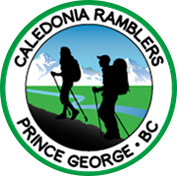Many outdoor recreationists are rediscovering snowshoeing as a great way to hike the scenic backcountry of BC during the winter months. Even though you may have hiked the same trails in summer, they take on a completely different aura as they are transformed into a winter wonderland. The addition of snow makes it possible to explore areas you couldn’t in the summer months because of thick vegetation. Here are some items that are essential for these “winter hikes”.
Equipment Checklist
Snowshoes. The most important item. When selecting snowshoes you need to consider how much weight the shoes must support (including the weight of your pack) to provide proper flotation on the snow. Aluminum shoes are best suited for mountainous areas. Ensure the snowshoes have teeth facing all four compass points to provide better traction. Avoid plastic bindings as they can snap in extremely cold weather.
Ski Poles. These provide balance and stability when crossing over obstacles or ascending or descending extremely steep slopes. Cross-country ski poles with wide baskets are ideal for this purpose.
Boots. A good pair of winter boots is a must. They should be well insulated, water resistant and comfortable. For snowshoeing, it is helpful if they also have rubber that extends above the back of the heel. This allows the heel portion of the snowshoe binding to firmly grab the back of the boot and prevent it from slipping off.
Clothing. Dress appropriately for the weather. Synthetic and wool fabrics are superior to cotton as they provide better insulation when they become wet from perspiration and will dry more quickly. A well ventilated shell layer jacket and snow pants are also critical to keep out wind. Other items that will improve your comfort include: thermal undergarments, wool socks, fleece sweater, gloves/mittens, scarf, balaclava and toque. Swapping some of your wet clothes for dry ones might be welcomed once you have reached your destination, or at least back at the vehicle at the end of the day. This will prevent the chills from setting in when you stop long enough to cool down.
Rope. If the bindings break or snap on your snowshoes, then you will be grateful to have some rope handy to re-attach them to your boots and keep going.
Avalanche Transponder. You never know when or where one might occur but should you get caught in an avalanche, then having a transponder greatly increases the likelihood that you will be found and rescued.
Portable Shovel. This item comes in handy for all sorts of occasions. It can be used for digging out a shelter, getting your vehicle out of a snow bank, and is an essential rescue tool to dig someone out from an avalanche.
